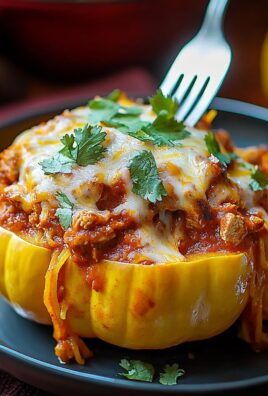Vietnamese Beef Stew, or Bò Kho as it’s known in Vietnam, is a culinary hug in a bowl, and I’m so excited to share my family’s treasured recipe with you! Imagine tender, melt-in-your-mouth chunks of beef, simmered in a rich, fragrant broth infused with star anise, cinnamon, and a hint of chili. Are you already drooling? I know I am just thinking about it!
This isn’t just any beef stew; it’s a dish steeped in history and cultural significance. Bò Kho reflects Vietnam’s French colonial past, blending classic French techniques with vibrant Southeast Asian flavors. It’s a testament to culinary fusion, a beautiful marriage of East and West that has captivated taste buds for generations.
What makes this Vietnamese Beef Stew so irresistible? It’s the perfect balance of savory, sweet, and subtly spicy notes. The beef becomes incredibly tender during the long braise, and the carrots and potatoes add a delightful sweetness and creamy texture. But beyond the incredible taste, Bò Kho is also surprisingly versatile. It can be enjoyed as a hearty soup on a chilly evening, served over rice noodles (h? ti?u) for a satisfying lunch, or even paired with crusty bread for dipping into that luscious broth. It’s comfort food at its finest, and I guarantee it will become a new family favorite!
Ingredients:
- 2 lbs beef chuck, cut into 1.5-inch cubes
- 1 large onion, chopped
- 4 cloves garlic, minced
- 2 tablespoons tomato paste
- 2 tablespoons vegetable oil
- 4 cups beef broth
- 1 cup water
- 1/2 cup red wine (optional, but highly recommended!)
- 2 carrots, peeled and cut into 1-inch pieces
- 2 potatoes, peeled and cut into 1-inch pieces
- 1 stalk celery, chopped
- 1 star anise
- 1 cinnamon stick
- 1 bay leaf
- 1 tablespoon fish sauce (nuoc mam)
- 1 tablespoon sugar
- 1 teaspoon salt, or to taste
- 1/2 teaspoon black pepper, or to taste
- 1/4 teaspoon five-spice powder
- Fresh cilantro, chopped, for garnish
- French bread or rice noodles, for serving
- Optional: 1 tablespoon cornstarch mixed with 2 tablespoons cold water (for thickening)
- Optional: A few drops of red food coloring (for a deeper color, traditionally used but not necessary)
Preparing the Beef:
Okay, let’s get started! The key to a great Vietnamese Beef Stew (Bo Kho) is tender, flavorful beef. So, we’ll start by prepping the beef properly.
- Marinate the Beef: In a large bowl, combine the beef cubes with the minced garlic, fish sauce, sugar, salt, pepper, and five-spice powder. Mix everything really well, making sure each piece of beef is coated in the marinade. This marinade is going to infuse the beef with so much flavor! Cover the bowl with plastic wrap and let it marinate in the refrigerator for at least 30 minutes, or even better, for a couple of hours. The longer it marinates, the more flavorful and tender the beef will become. I usually aim for at least an hour if I have the time.
- Sear the Beef: This step is crucial for developing a rich, deep flavor in the stew. Heat the vegetable oil in a large, heavy-bottomed pot or Dutch oven over medium-high heat. Once the oil is shimmering, add the beef in batches, being careful not to overcrowd the pot. Overcrowding will lower the temperature of the oil and cause the beef to steam instead of sear. Sear each side of the beef cubes until they are nicely browned. This usually takes about 2-3 minutes per side. Remove the seared beef from the pot and set it aside. Don’t worry about cooking the beef all the way through at this point; we just want to get a good sear on the outside.
Building the Flavor Base:
Now that the beef is nicely seared, we’re going to build the flavor base of the stew. This is where the magic happens!
- Sauté the Aromatics: In the same pot (don’t clean it yet all those browned bits are flavor!), add the chopped onion and celery. Sauté over medium heat until the onion is softened and translucent, about 5-7 minutes. Stir occasionally to prevent burning. The onions and celery will release their natural sweetness and create a delicious foundation for the stew.
- Add Tomato Paste: Stir in the tomato paste and cook for another 2-3 minutes, stirring constantly. Cooking the tomato paste helps to caramelize it and deepen its flavor. Be careful not to burn the tomato paste, as it can become bitter.
- Deglaze the Pot: Pour in the red wine (if using) and scrape the bottom of the pot to loosen any browned bits that are stuck to the bottom. These browned bits are called “fond,” and they are packed with flavor. The red wine will help to dissolve the fond and add a rich, complex flavor to the stew. If you’re not using red wine, you can use a little bit of beef broth instead.
Simmering the Stew:
This is where the patience comes in. Simmering the stew low and slow is the key to tender beef and a flavorful broth.
- Combine Ingredients: Return the seared beef to the pot. Add the beef broth, water, star anise, cinnamon stick, and bay leaf. Bring the mixture to a boil, then reduce the heat to low, cover the pot, and simmer for at least 2-3 hours, or until the beef is very tender. The longer you simmer the stew, the more flavorful it will become. I often let it simmer for 3 hours or even longer if I have the time. Check the stew periodically and add more water if needed to keep the beef submerged.
- Add Vegetables: After the beef has been simmering for at least 2 hours, add the carrots and potatoes. Continue to simmer for another 30-45 minutes, or until the vegetables are tender. The carrots and potatoes will absorb the flavors of the stew and become incredibly delicious.
- Adjust Seasoning: Taste the stew and adjust the seasoning as needed. You may need to add more salt, pepper, or sugar to balance the flavors. Remember that the flavors will continue to develop as the stew simmers, so don’t be afraid to add a little bit at a time.
- Thicken the Stew (Optional): If you prefer a thicker stew, you can thicken it with a cornstarch slurry. In a small bowl, whisk together the cornstarch and cold water until smooth. Gradually pour the cornstarch slurry into the stew, stirring constantly. Bring the stew to a simmer and cook for another 2-3 minutes, or until the stew has thickened to your desired consistency.
- Add Red Food Coloring (Optional): If you want to achieve a deeper, more vibrant red color, you can add a few drops of red food coloring. This is traditionally used in Vietnamese Beef Stew, but it’s not necessary. I personally don’t usually use it, but it’s up to you!
Serving:
Finally, the moment we’ve all been waiting for! It’s time to serve up this delicious Vietnamese Beef Stew.
- Garnish and Serve: Remove the star anise, cinnamon stick, and bay leaf from the stew. Ladle the stew into bowls and garnish with fresh cilantro. Serve hot with French bread or rice noodles. The French bread is perfect for soaking up the delicious broth, while the rice noodles provide a lighter, more traditional option.
Tips and Variations:
- Beef Cuts: While beef chuck is the most common cut used for Bo Kho, you can also use other cuts of beef, such as brisket or short ribs. These cuts will require a longer simmering time to become tender.
- Spices: Feel free to adjust the spices to your liking. Some people like to add a pinch of chili flakes for a little heat, or a few cloves for a more intense flavor.
- Vegetables: You can also add other vegetables to the stew, such as daikon radish, taro root, or mushrooms.
- Lemongrass: For an extra layer of flavor, add 1-2 stalks of lemongrass, bruised, to the stew during the simmering process. Remove before serving.
- Carrots: Some recipes call for using both regular carrots and daikon radish, which adds a slightly different sweetness and texture.
- Serving Suggestions: Bo Kho is often served with a side of bean sprouts, basil, and lime wedges, which can be added to the stew for extra flavor and freshness.
- Slow Cooker: This recipe can easily be adapted for a slow cooker. Sear the beef as directed, then transfer all ingredients to the slow cooker. Cook on low for 6-8 hours, or on high for 3-4 hours. Add the vegetables during the last hour of cooking.
Enjoy!
I hope you enjoy this recipe for Vietnamese Beef Stew (Bo Kho)! It’s a comforting and flavorful dish that’s perfect for a cold day. Don’t be afraid to experiment with the ingredients and adjust the recipe to your liking. Happy cooking!

Conclusion:
This Vietnamese Beef Stew, or Bo Kho, is more than just a recipe; it’s a culinary journey to the heart of Vietnam, right in your own kitchen. I truly believe this is a must-try recipe because it perfectly balances rich, savory flavors with a hint of warmth and spice, creating a deeply satisfying and comforting meal. The tender beef, infused with the aromatic blend of star anise, cinnamon, and lemongrass, melts in your mouth, while the carrots and potatoes add a touch of sweetness and heartiness. It’s a symphony of textures and tastes that will leave you craving more.
But the best part? It’s surprisingly easy to make! While the ingredient list might seem a bit long at first glance, don’t be intimidated. The process is straightforward, and the results are well worth the effort. Trust me, once you take that first bite, you’ll understand why I’m so passionate about sharing this recipe with you.
Serving Suggestions and Variations
Now, let’s talk about how to enjoy this incredible stew. Traditionally, Bo Kho is served with crusty French bread (banh mi) for dipping into the flavorful broth. The bread soaks up all the delicious juices, making each bite an absolute delight. You can also serve it over rice noodles (pho) for a heartier meal, or even with egg noodles for a different texture.
For variations, feel free to experiment with different vegetables. Some people like to add daikon radish or taro root for a unique twist. If you prefer a spicier stew, add a pinch of chili flakes or a few slices of fresh chili peppers. And if you’re short on time, you can use a pressure cooker to significantly reduce the cooking time. Just be sure to adjust the liquid accordingly.
Another great variation is to add a splash of red wine during the braising process. This will deepen the flavor and add a touch of richness. You can also experiment with different cuts of beef. While I recommend using chuck roast for its tenderness and flavor, you can also use brisket or short ribs. Just be sure to adjust the cooking time accordingly.
Why This Recipe Stands Out
What truly sets this Vietnamese Beef Stew apart is the unique blend of spices and aromatics. The star anise, cinnamon, and lemongrass create a complex and fragrant flavor profile that is both comforting and exotic. The fish sauce adds a touch of umami, while the sugar balances the flavors perfectly. It’s a harmonious blend of ingredients that will tantalize your taste buds and leave you wanting more.
I’ve tried countless Bo Kho recipes over the years, and this one is, without a doubt, my absolute favorite. It’s the perfect balance of flavors, textures, and aromas, and it’s incredibly easy to make. I’ve tweaked and perfected this recipe over time, and I’m confident that you’ll love it as much as I do.
So, what are you waiting for? Gather your ingredients, put on your apron, and get ready to embark on a culinary adventure. I promise you won’t be disappointed.
I’m so excited for you to try this recipe and experience the magic of Vietnamese cuisine. Once you’ve made it, please come back and share your experience in the comments below. I’d love to hear your thoughts, suggestions, and any variations you might have tried. Happy cooking! Let me know how your Vietnamese Beef Stew turns out!
Vietnamese Beef Stew: A Flavorful and Easy Recipe
Tender beef stewed in a rich, flavorful broth with aromatic spices, carrots, and potatoes. A comforting Vietnamese classic (Bo Kho) perfect for a cozy meal.
Ingredients
- 2 lbs beef chuck, cut into 1.5-inch cubes
- 1 large onion, chopped
- 4 cloves garlic, minced
- 2 tablespoons tomato paste
- 2 tablespoons vegetable oil
- 4 cups beef broth
- 1 cup water
- 1/2 cup red wine (optional, but highly recommended!)
- 2 carrots, peeled and cut into 1-inch pieces
- 2 potatoes, peeled and cut into 1-inch pieces
- 1 stalk celery, chopped
- 1 star anise
- 1 cinnamon stick
- 1 bay leaf
- 1 tablespoon fish sauce (nuoc mam)
- 1 tablespoon sugar
- 1 teaspoon salt, or to taste
- 1/2 teaspoon black pepper, or to taste
- 1/4 teaspoon five-spice powder
- Fresh cilantro, chopped, for garnish
- French bread or rice noodles, for serving
- Optional: 1 tablespoon cornstarch mixed with 2 tablespoons cold water (for thickening)
- Optional: A few drops of red food coloring (for a deeper color, traditionally used but not necessary)
Instructions
- Marinate the Beef: In a large bowl, combine the beef cubes with the minced garlic, fish sauce, sugar, salt, pepper, and five-spice powder. Mix well, ensuring each piece of beef is coated. Cover and refrigerate for at least 30 minutes (or up to 2 hours for best results).
- Sear the Beef: Heat vegetable oil in a large, heavy-bottomed pot or Dutch oven over medium-high heat. Sear the beef in batches, being careful not to overcrowd the pot, until nicely browned on all sides (2-3 minutes per side). Remove and set aside.
- Sauté Aromatics: In the same pot, add the chopped onion and celery. Sauté over medium heat until softened and translucent, about 5-7 minutes, stirring occasionally.
- Add Tomato Paste: Stir in the tomato paste and cook for another 2-3 minutes, stirring constantly.
- Deglaze the Pot: Pour in the red wine (if using) and scrape the bottom of the pot to loosen any browned bits. If not using wine, use a little beef broth.
- Combine Ingredients: Return the seared beef to the pot. Add the beef broth, water, star anise, cinnamon stick, and bay leaf. Bring to a boil, then reduce heat to low, cover, and simmer for at least 2-3 hours, or until the beef is very tender. Check periodically and add more water if needed.
- Add Vegetables: After the beef has simmered for at least 2 hours, add the carrots and potatoes. Continue to simmer for another 30-45 minutes, or until the vegetables are tender.
- Adjust Seasoning: Taste the stew and adjust the seasoning as needed with salt, pepper, or sugar.
- Thicken (Optional): If desired, thicken the stew with a cornstarch slurry (cornstarch mixed with cold water). Gradually pour into the stew, stirring constantly. Simmer for 2-3 minutes, or until thickened.
- Add Red Food Coloring (Optional): Add a few drops of red food coloring if desired.
- Garnish and Serve: Remove the star anise, cinnamon stick, and bay leaf. Ladle the stew into bowls and garnish with fresh cilantro. Serve hot with French bread or rice noodles.
Notes
- Beef chuck is recommended, but brisket or short ribs can also be used (increase simmering time).
- Adjust spices to your preference.
- Other vegetables like daikon radish, taro root, or mushrooms can be added.
- For extra flavor, add 1-2 stalks of bruised lemongrass during simmering (remove before serving).
- Serve with bean sprouts, basil, and lime wedges for added freshness.
- Slow Cooker Adaptation: Sear beef, then transfer all ingredients to the slow cooker. Cook on low for 6-8 hours or on high for 3-4 hours. Add vegetables during the last hour.





Leave a Comment